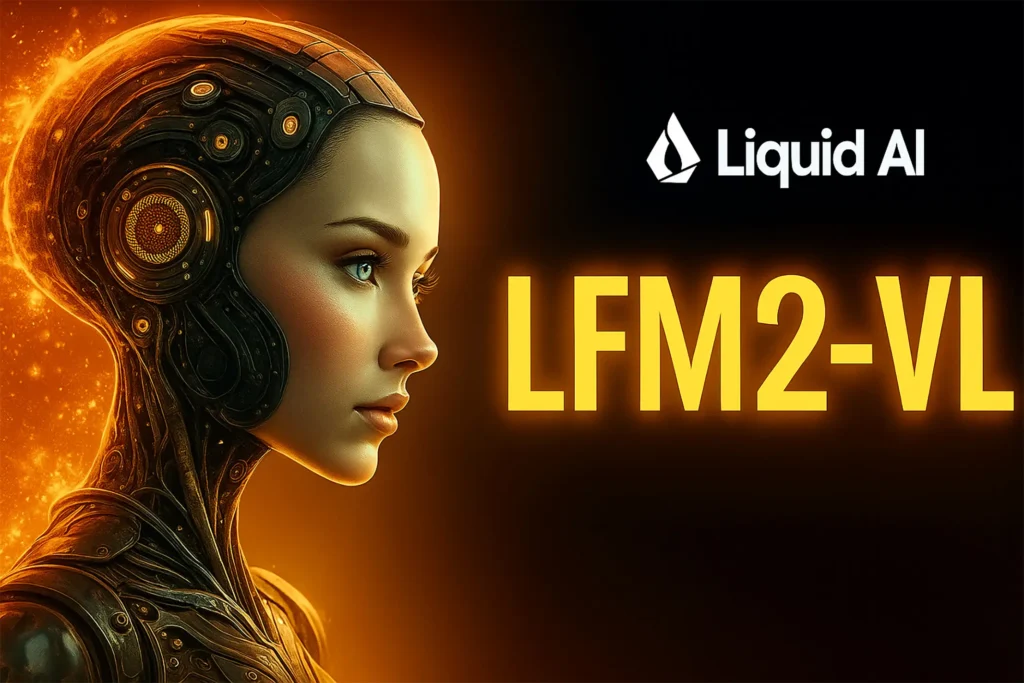Artificial intelligence has been moving at breakneck speed, and the latest development from Liquid AI feels like a milestone worth paying attention to. The company has unveiled LFM2-VL, a family of open-weight vision-language models designed to work faster, smarter, and more efficiently than most of what’s out there right now.
Unlike many closed systems controlled by tech giants, LFM2-VL is being released openly, giving researchers, startups, and developers the freedom to experiment without hitting paywalls or license restrictions. This decision is as important as the technology itself.
Why LFM2-VL Matters
At its core, LFM2-VL brings together two fields that have long been developing in parallel: computer vision and language processing. Traditional models tend to treat images and text separately. By contrast, this system fuses the two. That means it can look at a medical scan and understand accompanying notes, or analyse a chart and instantly provide a written summary.
The key selling point, though, is speed. Liquid AI claims its models respond in real time, even when tackling demanding multimodal tasks. That’s not a minor improvement—it’s the difference between something useful in a lab and something deployable in the real world.
Key Capabilities of LFM2-VL
While the details of training remain closely guarded, several standout features have been highlighted:
- Real-time responses:
Optimised for rapid deployment in time-sensitive applications like autonomous driving or interactive assistants.
- Open-weight release:
A rare move in today’s market, letting developers adapt the models without heavy restrictions.
- Multilingual flexibility:
Trained on diverse datasets, enabling use in different languages and cultural contexts.
- Scalable design:
Available in smaller, mobile-ready versions as well as larger, enterprise-focused deployments.
- Deep multimodal integration:
Effective at handling everything from basic image captioning to complex cross-modal reasoning.
Where This Technology Fits In
The potential use cases are broad. Consider just a few examples:
- Healthcare:
Doctors could use the models to combine X-rays or MRI scans with patient histories, producing faster and more accurate diagnostics.
- Transport:
In self-driving systems, speed matters. A car has only seconds to react, and real-time recognition could save lives.
- E-commerce:
Imagine uploading a photo of an item and instantly receiving exact or similar matches across a retailer’s catalogue.
- Education:
Automated tutoring systems could combine diagrams, documents, and explanations into a single interactive experience.
- Media and publishing:
Journalists and creators could rely on AI to generate captions, summaries, or even highlight reels from long videos.
How It Stands Against Competitors
Plenty of multimodal AI models exist, from OpenAI’s GPT-4V to Google’s Gemini. But LFM2-VL is different in two major ways: accessibility and efficiency.
- Accessibility: Being open-weight gives it an edge over closed rivals. Researchers worldwide can fine-tune it without waiting for approvals.
- Efficiency: Early reports suggest it delivers high performance while using fewer resources, making it viable for smaller teams and organisations.
That combination makes it more inclusive and practical than many of its competitors, which demand heavy infrastructure to even begin experimenting.
Looking Toward the Future
What makes this launch significant isn’t just the technology itself—it’s what it represents. LFM2-VL suggests a future where cutting-edge AI isn’t locked away in private labs but is instead part of a more collaborative ecosystem. That shift could accelerate innovation in fields ranging from medicine to media.
The real test will be adoption. If startups, researchers, and industries embrace LFM2-VL and build on it, Liquid AI’s gamble on openness will pay off. And if that happens, we may look back on this launch as a turning point in the evolution of multimodal artificial intelligence.
Conclusion:-
With the launch of LFM2-VL, Liquid AI is positioning itself as a challenger to the dominant players in AI. By combining ultra-fast vision-language processing with an open-weight philosophy, the company has created a platform that is not only technically impressive but also genuinely useful to a wider community.
Whether it’s used in healthcare, transport, retail, or research, the impact of this model family could be far-reaching. One thing is clear: LFM2-VL has set a new standard for what vision-language models can be.

